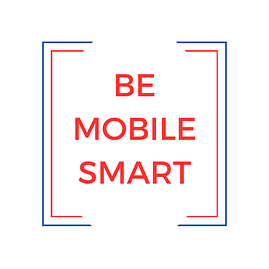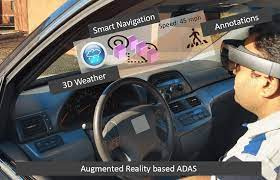It’s counter intuitive that smartphones can make driving safer and less stressful.
After all, smartphones lead us to take our eyes off the road and focus attention elsewhere. Federal data from 2021 indicates that distracted driving was associated in 12% of fatal crashes and 8% in non-fatal ones. The actual rates are higher since many drivers will not reveal that they were using their phone and states do not have a uniform policy for coding driver distraction following an accident. The Governor’s Highway Safety Association estimates that cell phones are tied to 25% of car crashes.
Despite the growing problem of distraction phones can also be useful in cars. We need to acknowledge positive things that smartphones enable and how they can improve trip taking. There’s a reason that most drivers panic if they leave home without their phone, and drive back to get it. There’s also a future technology that will make phones obsolete.
For now, phones enable connections that make a trip smoother and more within the driver’s control. Professional drivers, like truckers and limo drivers, could not get their job done without the technology. Digital logs have replaced their paper handling and scheduling. Phones in the vehicle are equally essential for carpool moms, soccer dads, and even elderly drivers.
Robust Functionality:
Their functionality is robust: For music aficionados, it’s the playlist that is personal and enjoyable. It is a familiar set of songs that make the time in the car seem to fly by, or at least pass pleasantly. For audiophiles, the phone serves up books-on-tape or a podcast. Car time is story time.
Other smartphone applications are trip-centric. The most essential one is displaying maps- whether on the phone or on a dashboard display. Digital navigation has almost completely replaced paper maps and most drivers would be lost without the navigation prompts. An overlooked factor, but one that makes driving safer and less stressful is the digital feature that alerts drivers about the travel lane they need to position into or which lanes may be blocked up ahead. Digital navigation also helps to locate nearby gas stations or electrical vehicle plugs, and identify open parking spaces so there’s less circling around the block.
The functionality of phones in cars will only continue to increase. The danger and risk is that the applications detract from the road and evoke more mental resources. Communications that are personally involving or emotionally taxing hijack concentration and control. It happens in a flash, just like a traffic accident.
Personal texts and phone calls are perhaps the most involving and the most distracting.Some years ago, driving simulations by David Strayer, an expert in this area, found that it took drivers 27 seconds to recover after a highly distracting phone using a complex car-voice command system. Twenty-seven seconds is the time that a driver travels the length of three football fields at 25 miles per hour. Fortunately, car-voice command systems are improving, perhaps keeping us a little safer during highly involving and personal conversations in the car.
Driven to Distraction?
There is no leaving phones at home, or putting them back in the bottle, in this case a locked glove compartment. But it still remains a safety issue to make their presence less distracting. Apps that we use today, like Android and CarPlay require drivers to fiddle with the phone manually or take longer glances at the screen. They will be replaced with more integrated car-centric dashboards.
These dashboards may come with a cost to privacy but a check mark for driver safety. Android, for example, has developed Automotive OS, a system that runs directly from the car, regardless of the phone’s on/off status. The OS is integrated with various sensors to monitor the actions of drivers and the performance of the vehicle.
These future dashboards may interact not only with the driver, but also with the road-ahead. So, for example, they might connect and control the vehicle’s maximum speed or support steering wheel commands that brake for errant pedestrians or cyclists.. Stress free trips, driver safety, and these in-vehicle systems are rapidly evolving. Counter intuitively, they might make driver infotainment more accessible and driver distraction less problematic.

